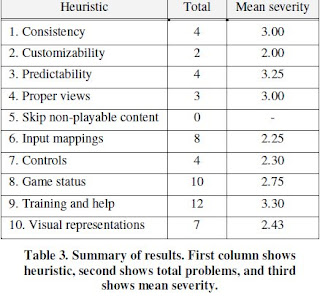Sunday, May 3, 2009
Fitts' Law (correct spelling = +bonus points)
Usability considered Harmful (some of the time)
Human centered design considered harmful
Ethnography considered harmful
Thursday, April 30, 2009
CHI '09 Urban Pixels: Painting the City with light


In this paper the guys were trying to make a new form of urban art that was interactive. The display they came up with is called Urban Pixels and it is basically a bunch of balls with white lights inside that can be placed on any surface and that can also communicate to each other and have a wireless network so they can be accessed from a laptop. You can also interact with the pixels by using a flashlight and shining it on them to turn each on individually or use a mobile phone to send a signal to them.
Overall i thought this paper was pretty interesting and it seems like the idea is cool. Since they are dealing with just low resolution arrays of these pixels you cant really make any patterns that are very detailed and that is kind of a downer.
Tuesday, April 28, 2009
Uist 07: Multi user interaction using handheld projectors
This paper was about some guys who made a handheld projector system. The system works with these staple gun like projectors that you hold in your hand and the interface that is used is explored in a flashlight-like manner. Meaning you have to search for the things you want to find by moving the projector around, this is shown clearly in the video. The main thing they wanted to do was try and make file sharing and things like that easy to do, but I really only see this being used for entertainment purposes, mainly amusement parks. Although it did look kind of useful in office meetings, i just don't think i would want to have a projector shining in my eyes while giving a presentation. They also integrated things into it like privacy settings and a feature where the projector will shut off if it is pointed at someone, but that someone has to be holding a projector themselves.
Friday, March 27, 2009
Emotional Design
Thursday, March 26, 2009
Thursday, March 12, 2009
CHI 2008: Heuristic evaluation for games: usability principles for video game design

The Man Who Shocked the World
Friday, February 27, 2009
Don Norman's The Design of Future Things
Monday, February 23, 2009
UIST papers: "Annotating Gigapixel Images" and "Foldable Interactive Displays"

have cost effective and small space consuming displays. Essentially,
foldable projection screens that can move around. The title of the paper
is a little deceiving, you think it would be a kind of screen that you



Thursday, February 19, 2009
Ethnography
The Mole People
Thursday, February 5, 2009
The Media Equation
Adam
The Media Equation is about trying to relate how we interact with computers and media to how we interact with human beings. So several studies were done to try and prove this, like using computers that were polite or had a voice that had a dominant tone or submissive tone and how people reacted to those kinds of things. And it turned out they reacted similarly to how they would to real things.
Thursday, January 29, 2009
Don Norman's Design of Everday Things
The faults in this book, though, lie with his constant barrage of examples that bore you to death. 1 or 2 examples for each idea would have been fine but he gives about 10. This work should be applied more to computers as well I think most of his examples were just for common every items, but it would be interesting to see it done for computers and software.
 After reading the book I took a look at this Pentax camera and some of its functions and uses are pretty obscure. For one, to open the back of it and put film in you have to pull the circle on the left of the camera up until the back pops. There are no markings or indications for this, you just have to know. Also none of the knobs or numbers on it are labeled you just have to be able to recognize what the numbers stand for. Basically you have to be a professional camera person or have read the manual (if it even comes with one) to understand how to work it.
After reading the book I took a look at this Pentax camera and some of its functions and uses are pretty obscure. For one, to open the back of it and put film in you have to pull the circle on the left of the camera up until the back pops. There are no markings or indications for this, you just have to know. Also none of the knobs or numbers on it are labeled you just have to be able to recognize what the numbers stand for. Basically you have to be a professional camera person or have read the manual (if it even comes with one) to understand how to work it.


